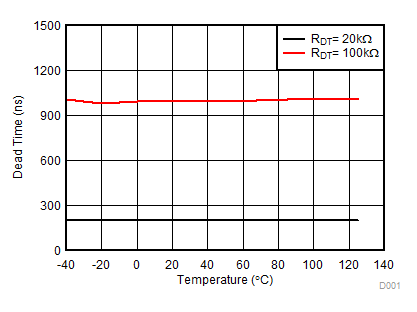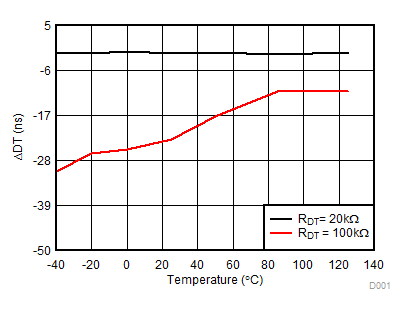SLUSDO2D June 2020 – August 2024 UCC21540-Q1 , UCC21540A-Q1
PRODUCTION DATA
- 1
- 1 Features
- 2 Applications
- 3 Description
- 4 Device Comparison Table
- 5 Pin Configuration and Functions
-
6 Specifications
- 6.1 Absolute Maximum Ratings
- 6.2 ESD Ratings
- 6.3 Recommended Operating Conditions
- 6.4 Thermal Information
- 6.5 Power Ratings
- 6.6 Insulation Specifications
- 6.7 Safety-Limiting Values
- 6.8 Electrical Characteristics
- 6.9 Switching Characteristics
- 6.10 Insulation Characteristics Curves
- 6.11 Typical Characteristics
- 7 Parameter Measurement Information
- 8 Detailed Description
-
9 Application and Implementation
- 9.1 Application Information
- 9.2
Typical Application
- 9.2.1 Design Requirements
- 9.2.2
Detailed Design Procedure
- 9.2.2.1 Designing INA/INB Input Filter
- 9.2.2.2 Select Dead Time Resistor and Capacitor
- 9.2.2.3 Select External Bootstrap Diode and Its Series Resistor
- 9.2.2.4 Gate Driver Output Resistor
- 9.2.2.5 Gate to Source Resistor Selection
- 9.2.2.6 Estimating Gate Driver Power Loss
- 9.2.2.7 Estimating Junction Temperature
- 9.2.2.8 Selecting VCCI, VDDA/B Capacitor
- 9.2.2.9 Application Circuits with Output Stage Negative Bias
- 9.2.3 Application Curves
- 10Power Supply Recommendations
- 11Layout
- 12Device and Documentation Support
- 13Revision History
- 14Mechanical, Packaging, and Orderable Information
6.11 Typical Characteristics
VDDA = VDDB = 15 V, VCCI = 3.3 V or 5.0 V, DT pin tied to VCCI, TA = 25°C, CL = 0 pF unless otherwise noted.

| No Load | INA = INB = GND |

| No Load |
 Figure 6-8 5-V VDD UVLO Threshold
Voltage
Figure 6-8 5-V VDD UVLO Threshold
Voltage



| tPDLH – tPDHL |


| No Load | INA = INB = GND |

 Figure 6-9 5-V VDD UVLO Hysteresis
Voltage
Figure 6-9 5-V VDD UVLO Hysteresis
Voltage



